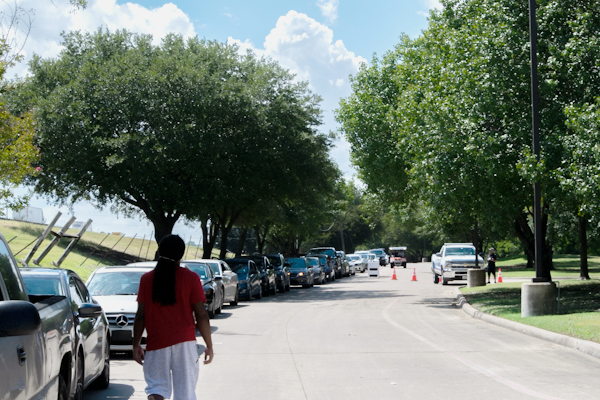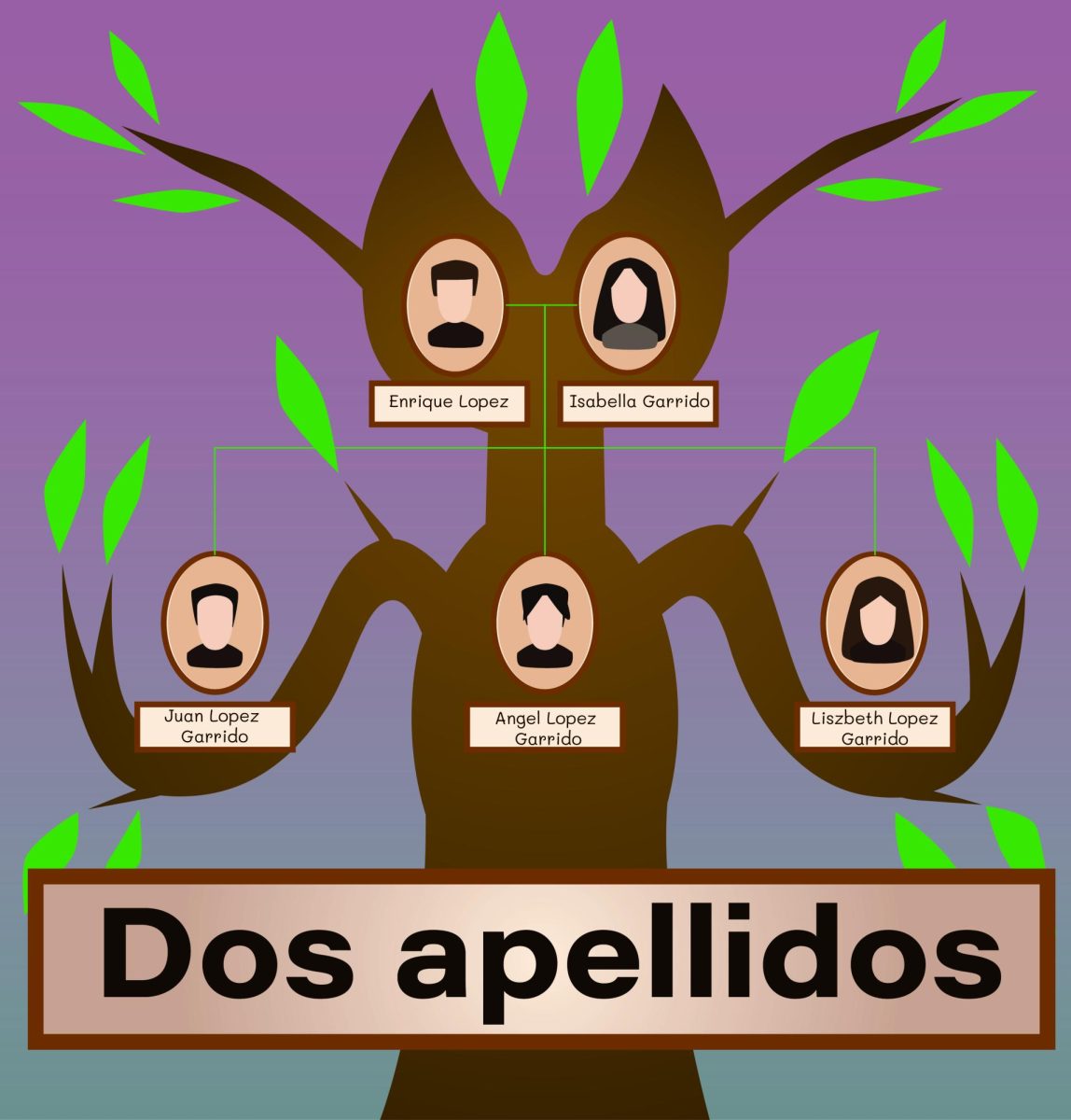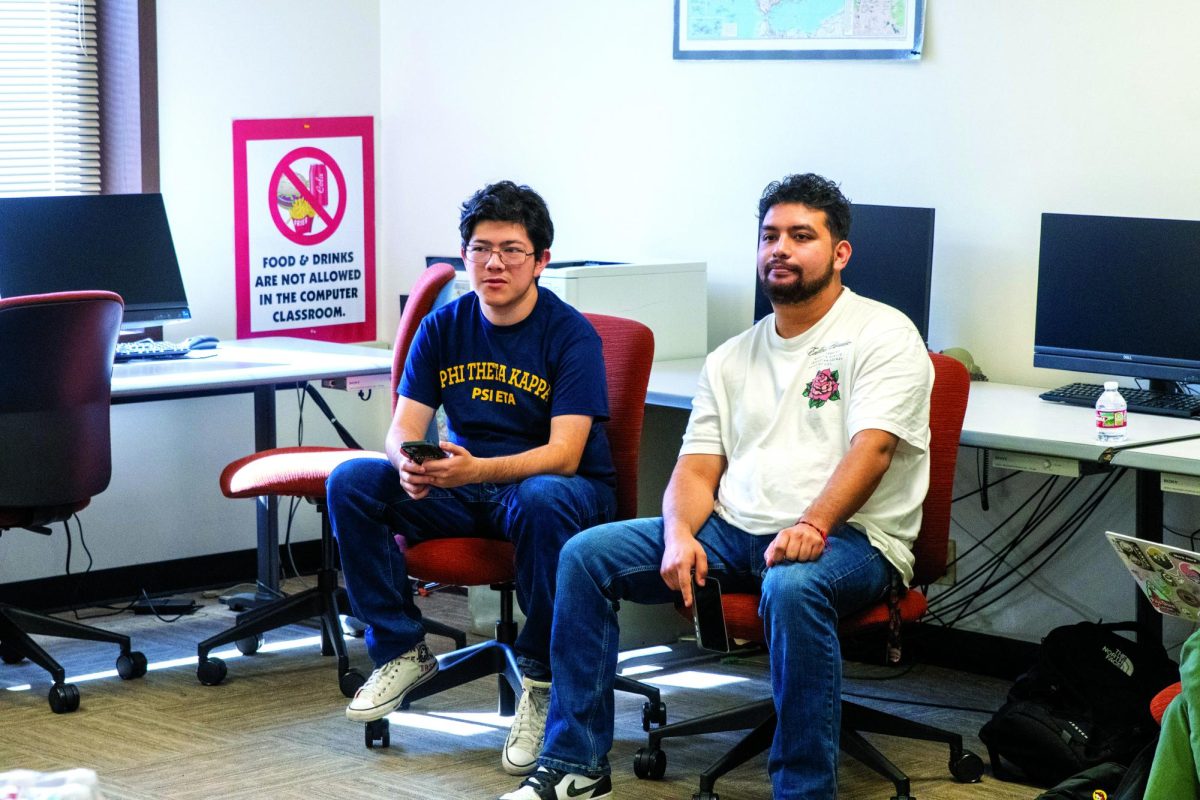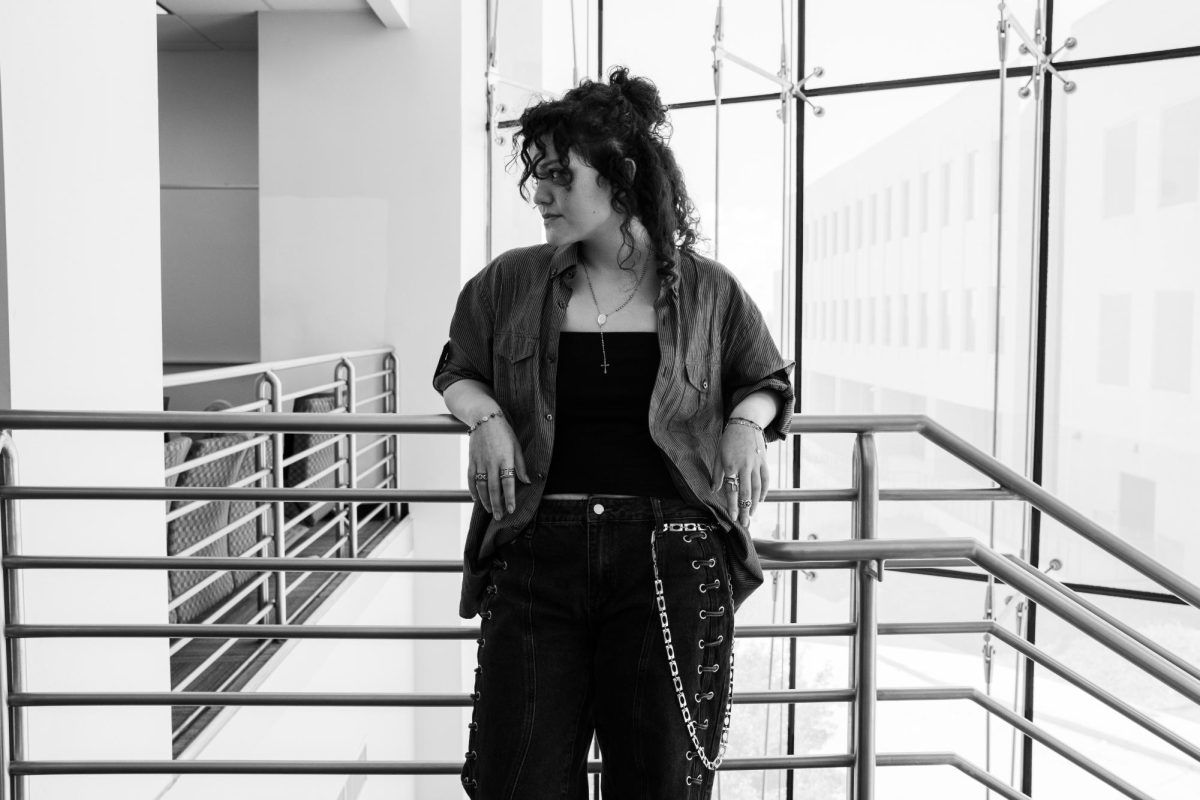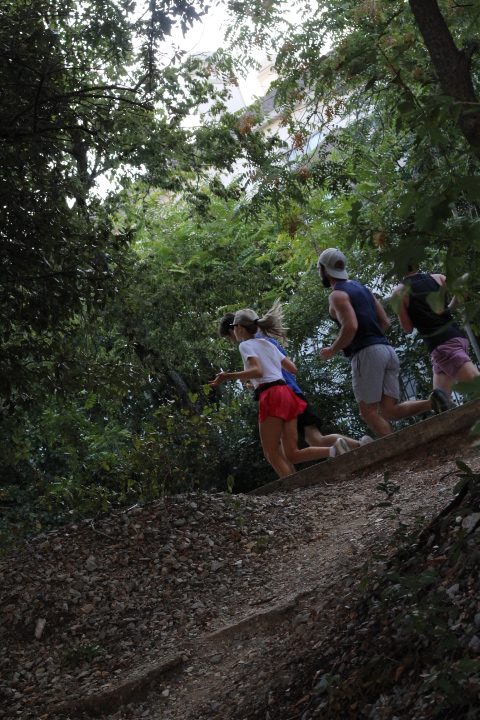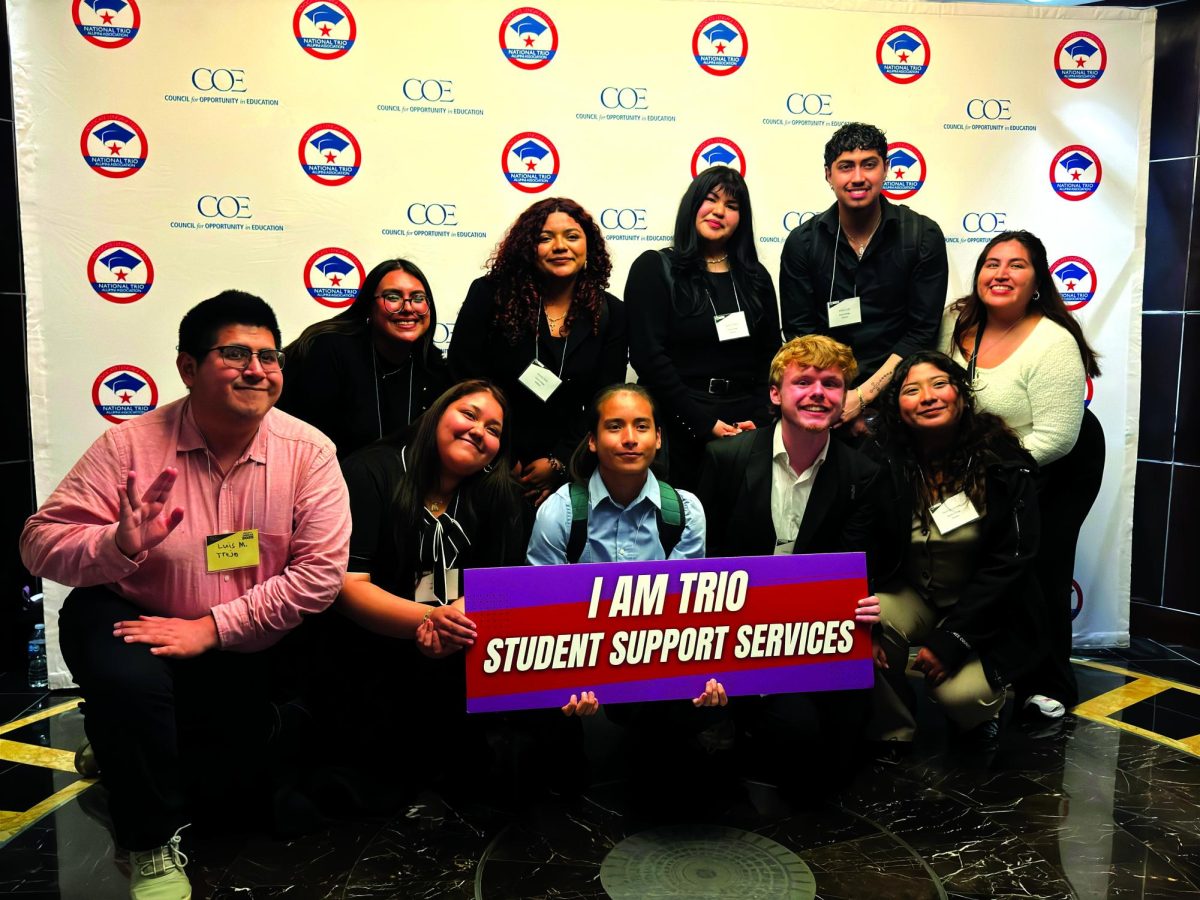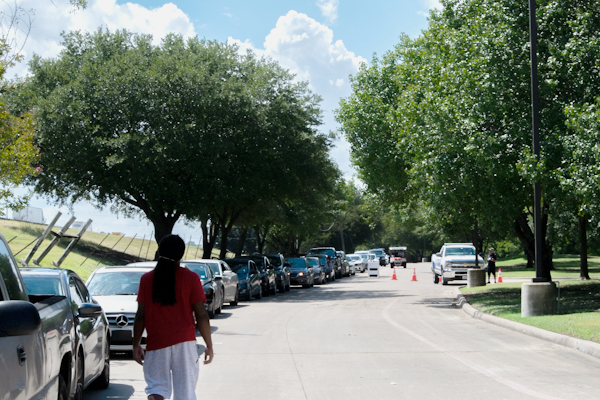
By JORDAN LACKEY
@JordanEtc
Rows of single-file vehicles stretched the service roads on both sides of Interstate 20 leading to the Mesquite Reception Center on the afternoon of Aug. 27, most of them adorned with Louisiana plates.
Tired faces looked out rolled-down windows, but the spirits of some seemed undaunted and unbroken. For many, this wasn’t their first hurricane experience.
Sanders Polk, from Orange, Texas, near the Louisiana border, remembers the hardship he faced after Harvey swept through and damaged his home in 2017. He’d only been moved back in for two weeks, fighting with the state to repair his home for three years, before Laura forced him back out.
“I’m really actually stressed out, but I hold on by the grace of God,” Polk said. “And what’s mine is mine. I’m never giving up.”
Polk was frustrated, but he maintained his humor and kept a smile on his face. However, through his darkened glasses the worry in his eyes was still visible.
He’s worried that he’s going to have to fight all over again. Polk said he called the Federal Emergency Management Agency on the morning of Aug. 27 and was informed that Texas was not yet declared to be in a state of emergency despite the fact that Laura was the strongest storm to hit the neighboring state of Louisiana, just 12 miles from his home, in over a century.
Fleeing Hurricane Laura, a category 4 Atlantic hurricane with destructive winds that killed 20 Louisianans that thrashed the Louisiana coast nearly 14 hours prior, this was an evacuee’s reception: scorched asphalt and the hopes of a hotel voucher. Many had been waiting for upwards of three hours, and that was only halfway down the line.
Kesha McCoy drove six hours in a packed SUV from Lake Charles, Louisiana. She’d been sitting in line for over two hours when she saw video footage online of a chemical fire close to her home and received word from a neighbor, still in the area, that a pine tree had fallen on her house.
“We’re just trying to get vouchers or whatever help we can get because we can’t go back there,” McCoy said. “They’re not letting anybody back there because of the fire back in Lake Charles. It’s horrible. The people that stayed, they’re letting them in, but us, we can’t go back because there’s no power, no water.”
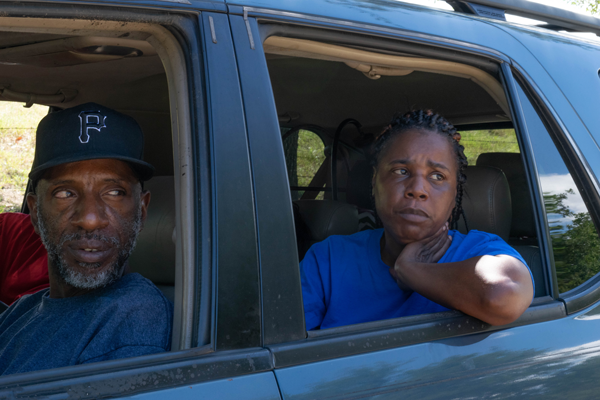
hotel vouchers on Aug. 27 at the Mesquite Reception Center. Photo by Chantilette Franklin/The Et Cetera
Lt. Clint Burgess with the Texas Army National Guard said the evacuee center was essentially set up to operate like a drive-thru on steroids. As people move through the line, they pull up, talk to a volunteer, exchange information, receive their hotel voucher and go on their way. Everyone was given a number, so the first person in line was the first person to get a hotel. He couldn’t disclose the location of the hotels due to safety reasons but said that most of them were located in the North Texas area.
“All the hotels in the Dallas-Fort Worth area have been very cooperative,” He said. “It’s great to see a community come together and really forge when something like this happens. … We just want to make sure we take care of our brothers and sisters in the South.”
The storm hit close to home for Burgess, who remembered his involvement with disaster relief for Hurricane Katrina 15 years ago.
“We’re doing it again,” he said. “[We’re] far more prepared than we were last time. I think the emergency notifications help a little bit. People are getting information quicker, and Texas emergency management has just done a phenomenal job making sure people have the information they need.”
Hurricane Laura presents a new challenge that wasn’t around 15 years ago, the added concern of a global pandemic. Burgess said they’re doing everything they can to limit the spread of COVID-19. All volunteers wore masks and were encouraged to follow social distancing guidelines. Hand sanitizer stations were also made available near the restroom facilities. He said most of the evacuees were very safety conscious.
From the Reception Center the line seemed endless and unmoving. The only signs of motion came from the people moving outside of their vehicles and the mirages of heat echoing off the blistering concrete beneath their wheels.
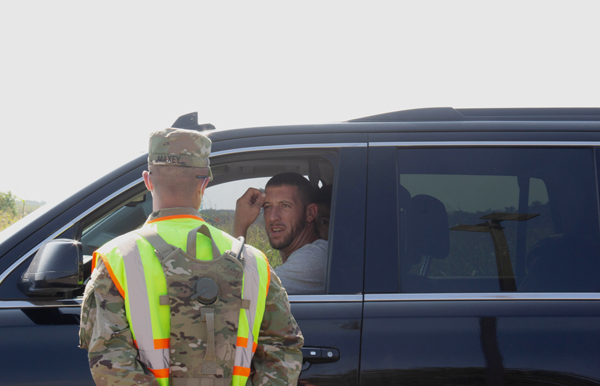
Braving temperatures over 90 degrees, many people waited with motors off, windows down, baking in the Texas sun.
“We have our own staff,” Burgess said, “We have our EMT’s here. We have some doctors here. We’ve got law enforcement, all the paramedics, you name it, we have everything ready. If someone pulled up in the parking lot with a medical emergency, we can handle it.”
Shawn Gibson, an employee for the city of Mesquite, was one of several people who volunteered to help out at the reception center. He was passing out ice water to anyone who would take it.
“It’s a slow-going process,” he said. “People are waiting in line. We’re having a lot of cars overheat because it’s hot today. But everybody’s been really grateful and patient and that’s been nice. It makes it go a little easier.”
Many evacuees seemed sanguine despite their horrid circumstances. Polk made jokes as he laughed with his niece and McCoy smiled sarcastically as she tried to remember the species of tree that fell through the roof of her home.
Kareem Mitchell was smiling too. He drove from Lake Charles with his two kids and fiancée in a car running low on coolant and the A/C starting to fail. He was pouring bottled water in his radiator tank in an effort to keep his family cool. Bent over the hood of his car, dripping sweat, he maintained his sense of optimism.
“It’s all material stuff,” Mitchell said. “I mean, us, we can’t bring back. Clothes we can get back. Car, it’s whatever. As long as we’re out, we’re cool. It’s all about family.”
[supsystic-gallery id=9]


